Diarrhea symptoms are an abnormal increase in the frequency, volume and liquidity of the stools. It is very common, happening in most people a few times each year. In most cases, the cause is unknown and it goes away on its own after a few days.
The world health organization (WHO) defines diarrhoea as the passage of loose or watery stools occurring three or more times in a 24-hour period.
It means an increased frequency or decreased consistency of bowel movements, and it affects people of all ages. Diarrhoea is the result of reduced water absorption by the bowel or increased water secretion.
It is usually a symptom of an infection in the intestinal tract, which can be caused by a variety of bacterial, viral, and parasitic organisms.
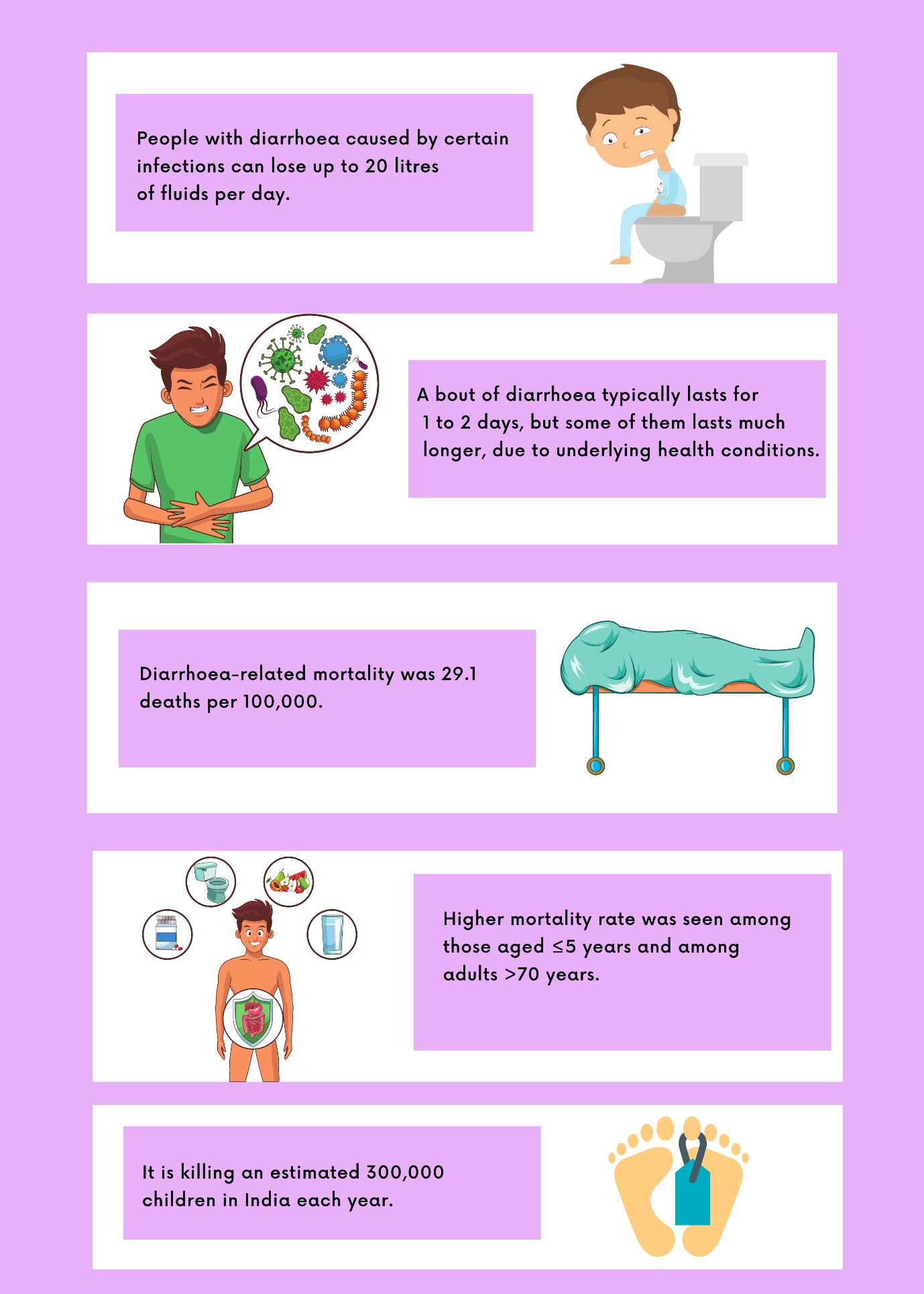
Diarrhea symptoms can be caused by bacteria. Dehydration is a dangerous side effect of diarrhea.
Diarrhoea is a common condition that varies in severity and ethology. The evaluation of diarrhoea varies depending on duration, severity, and presence of certain concurrent symptoms.
The incubation period is usually from a few hours to 5 days after exposure for bacterial diarrhoea and 1 to 3 days for viral diarrhoea.
Diarrheal diseases are major causes of malnutrition, delayed physical development, and early childhood mortality in developing countries and poor communities, and the major cause of death in children with diarrhoea is loss of water and essential minerals.
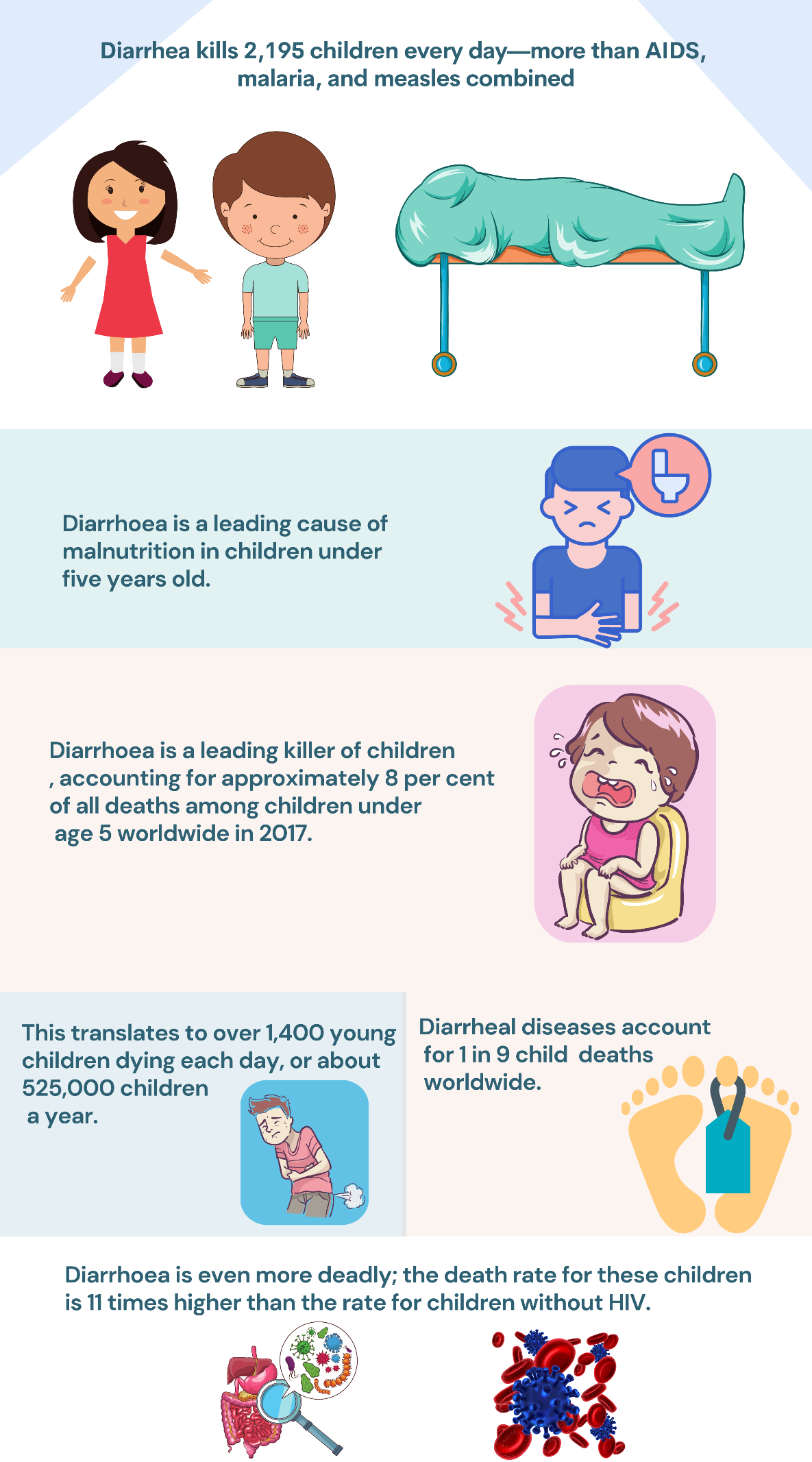
Types of Diarrhea
Diarrhea is categorized into acute or chronic and infectious or non-infectious based on the duration and type of symptoms. Diarrhea is a common problem. Acute diarrhea is more common than persistent or chronic diarrhea.
Acute diarrhea: It is defined as an episode lasting less than 2 weeks that typically lasts 1 or 2 days and goes away on its own.
A majority of acute diarrheal cases are due to infectious ethology. Most cases are the result of a viral infection, and the course is self-limited.
Diarrhea caused by an infection usually begins 12 hours to four days after exposure and resolves within three to seven days.
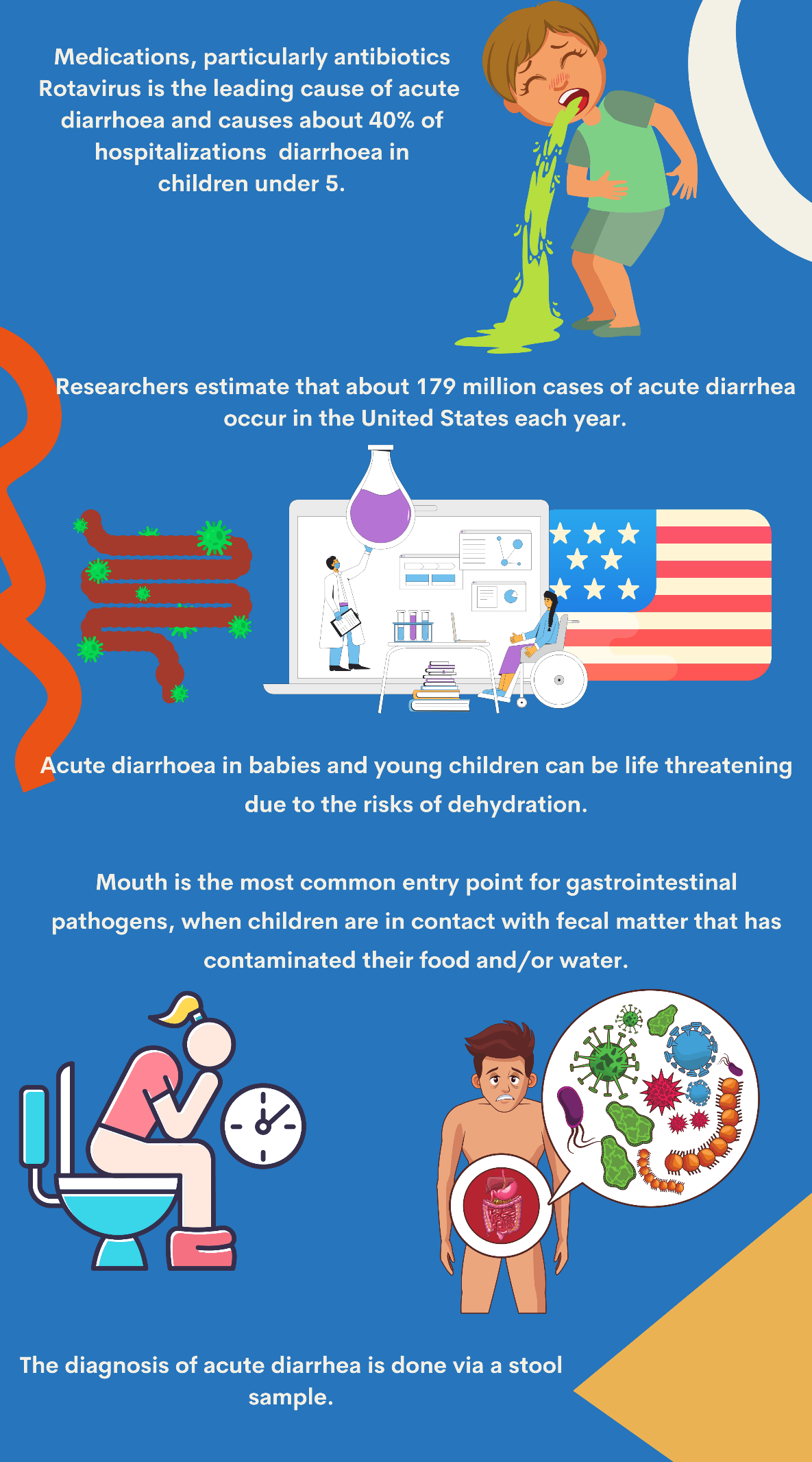
Causes of acute diarrhea
A bout of diarrhea can be caused by a wide range of disorders, infections and events including:
- food poisoning
- gastroenteritis
- tropical diseases, such as typhoid and cholera
- anxiety or emotional stress
- overconsumption of alcohol
- medications, particularly antibiotics
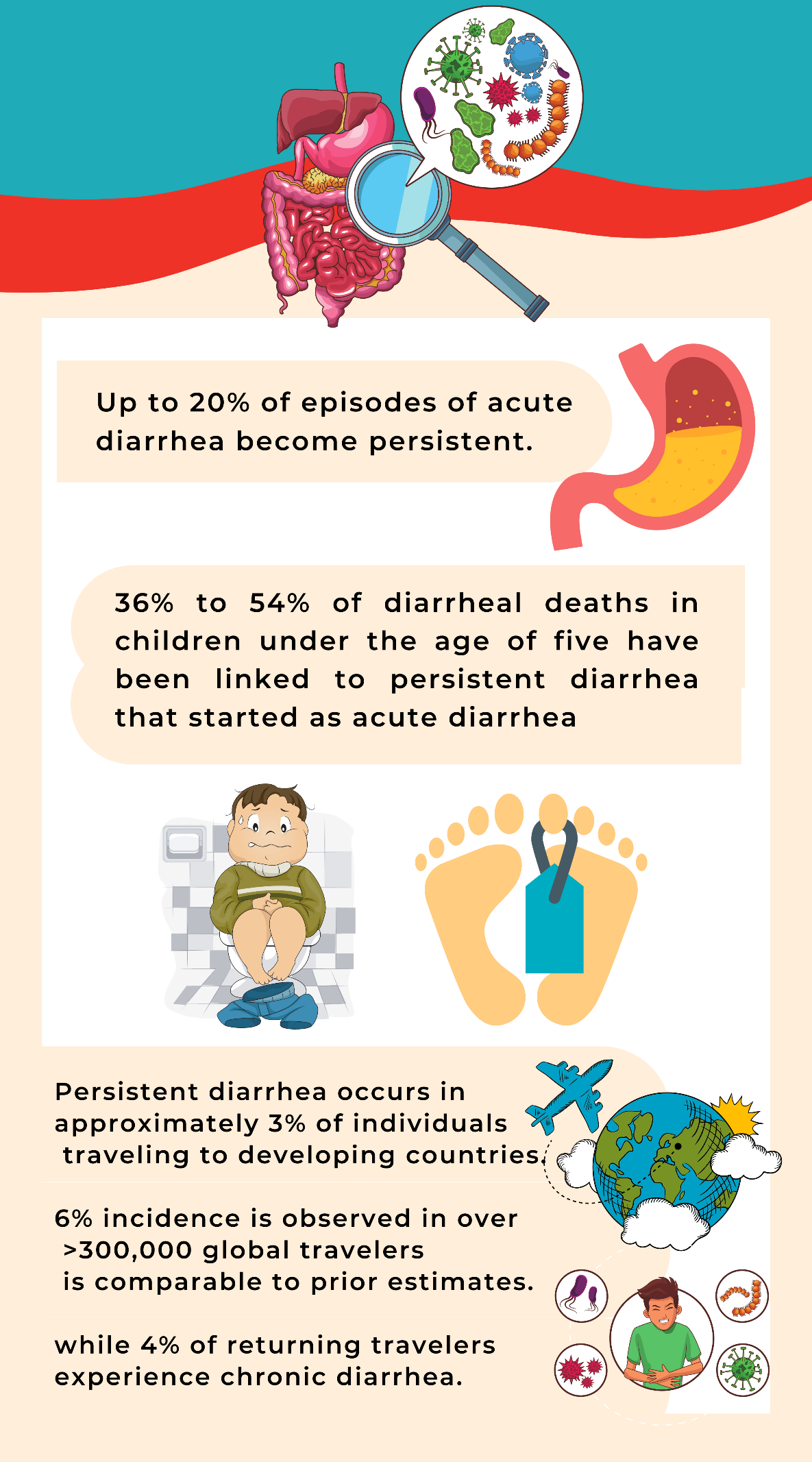
Increased incidence of acute diarrhea may occur in post-disaster situations where access to electricity, clean water, and sanitary facilities are limited.
A significant percent of diarrheal disease can be prevented by using clean drinking water, proper sanitation, and good personal hygiene.
Persistent diarrhea: Persistent diarrhea is defined as diarrhea symptoms lasting longer than 2 weeks and less than 4 weeks with increasing intensity.
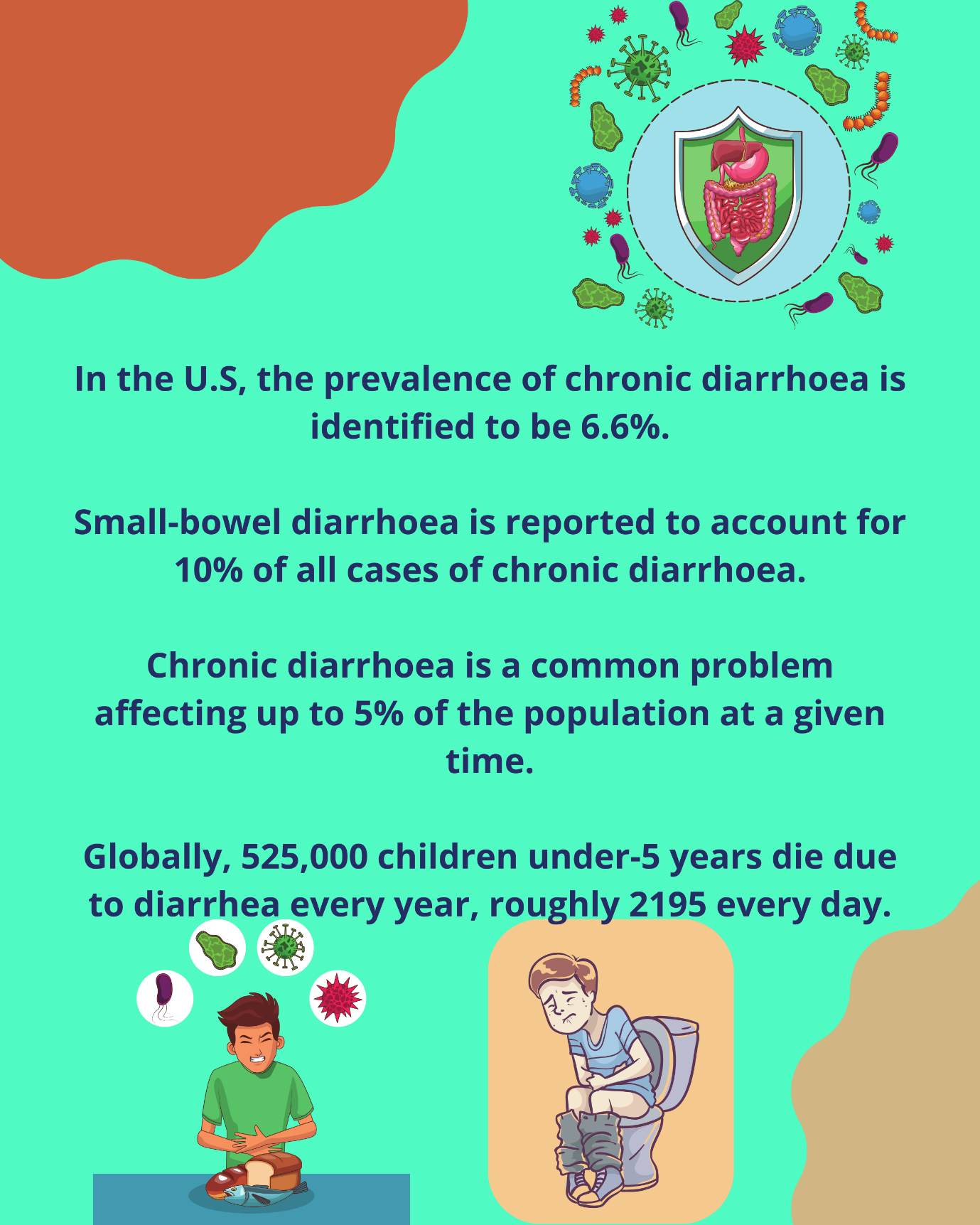
Chronic diarrhea: Chronic diarrhea is defined as diarrhea symptoms lasting longer than 4 weeks. Common causes include malabsorption, inflammatory bowel disease, and medication side effects.
Chronic diarrhea symptoms may be continual or may come and go. Non-infectious etiologies are more common as the duration of diarrhoea becomes chronic.
Chronic diarrhoea is commonly categorized into three groups; watery, fatty, or infectious. Lactose intolerance is a type of watery diarrhoea that causes increased water secretion into the intestinal lumen.
Causes of Chronic Diarrhoea
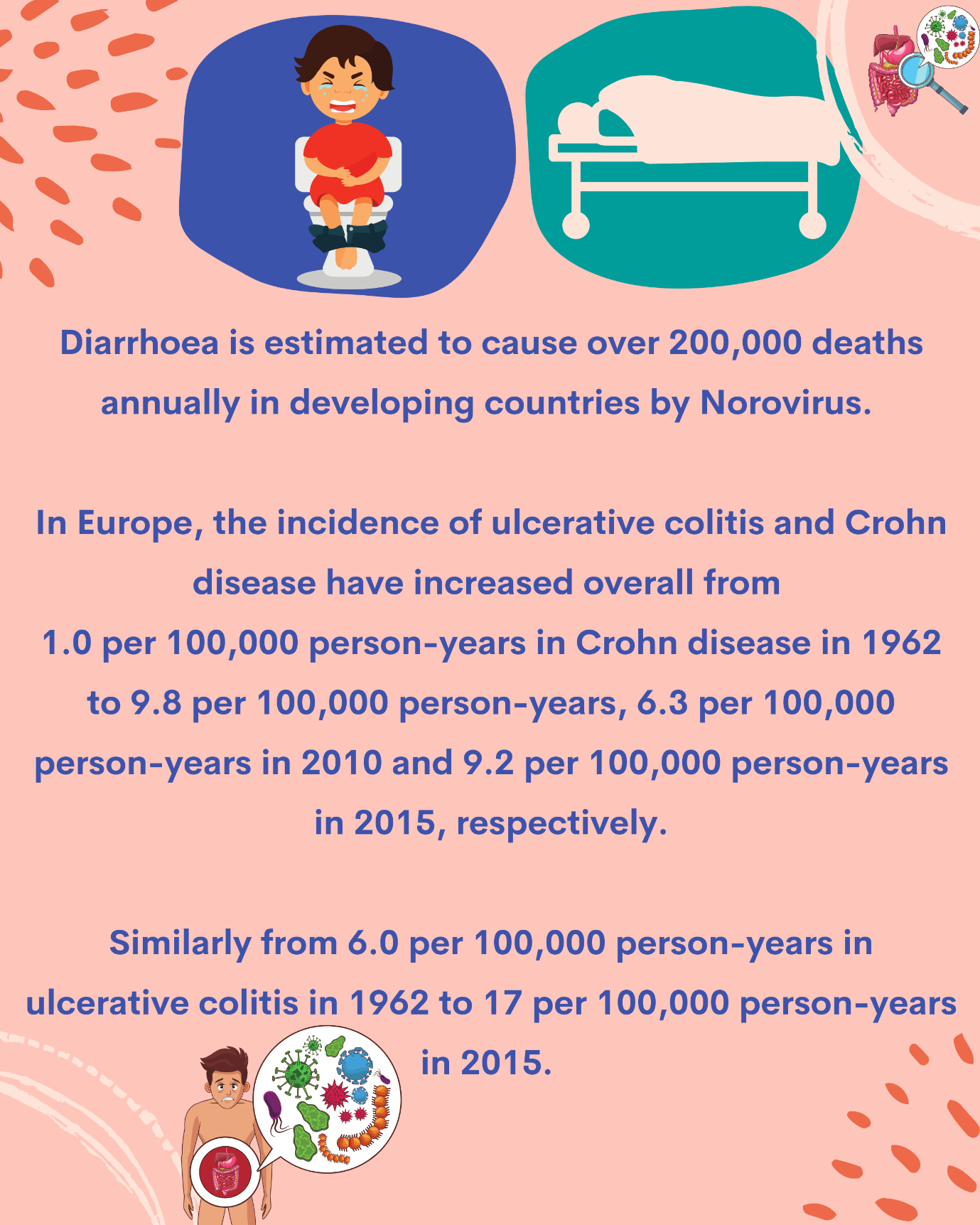
Causes of Diarrhoea
The most common cause of diarrhea is a virus that infects your bowel. The infection usually lasts a couple of days and is sometimes called “intestinal flu.”
Norovirus is associated with approximately one-fifth of all infectious diarrhea cases, with similar prevalence in both children and adults.
Historically, rotavirus was the most common cause of severe disease in young children globally. Rotavirus vaccination programs have decreased the prevalence of diarrhea cases associated with rotavirus.
The other causes of chronic diarrhea includes inflammatory bowel disease, Crohn disease, and ulcerative colitis.
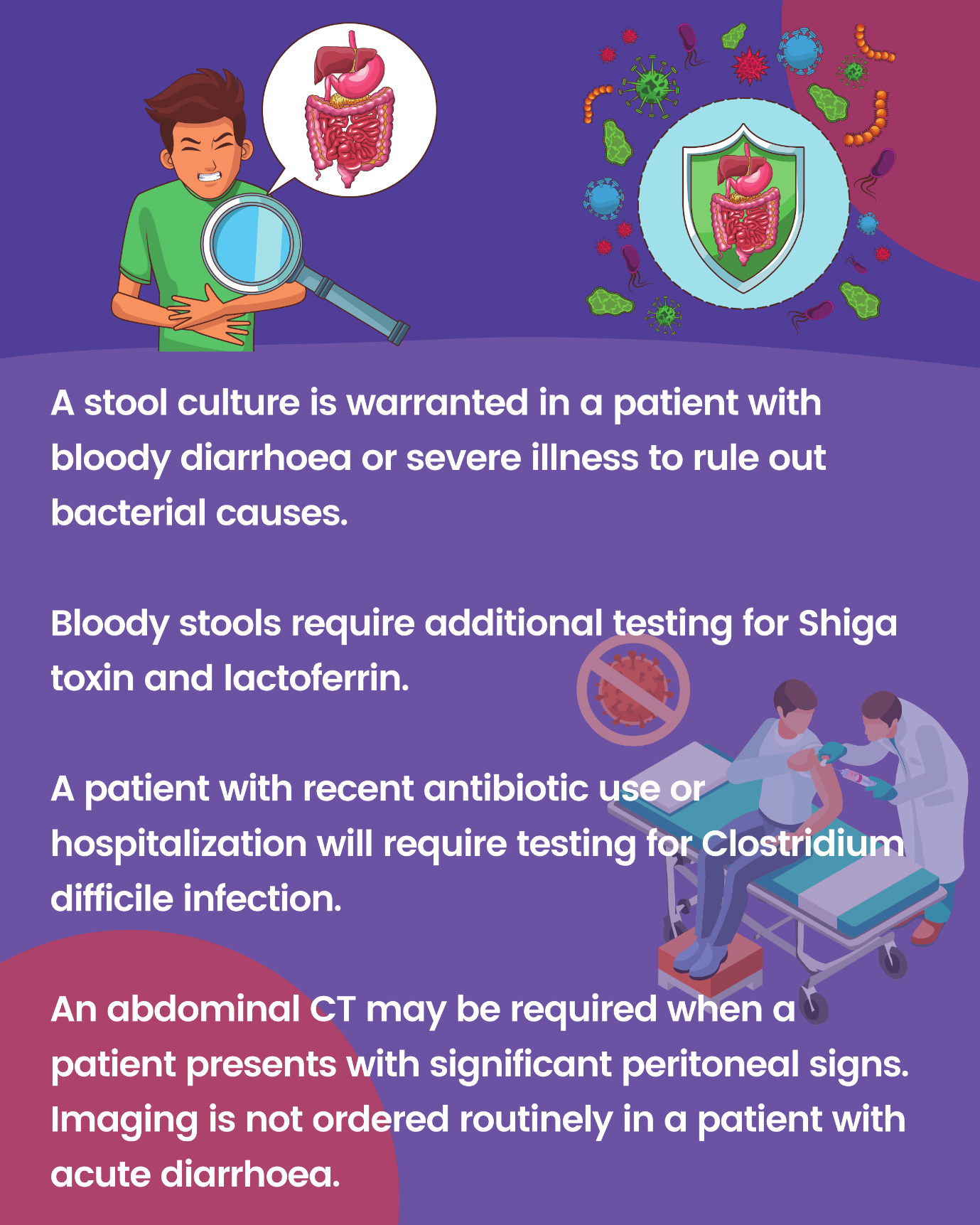
Other possible causes of diarrhea can include:
- Infection by bacteria.
- Infections by other organisms and pre-formed toxins
- Eating foods that upset the digestive system.
- Allergies and intolerances to certain foods (Celiac disease or lactose intolerance).
- Medications.
- Radiation therapy.
- Malabsorption of food (poor absorption).
Symptoms of Diarrhea
The symptoms you can experience when you have diarrhea varies depending on if it’s mild or severe and what the cause of the diarrhea happens to be.
When you have diarrhea, you may experience all of these symptoms or only a few. The main symptom of diarrhea is loose or watery stool.
Patients with diarrhea might also complain of abdominal pain or cramping, vomit, bloating, nausea, weight loss, dehydration, severe pain, flatulence, fever, and bloody or mucoid stools.
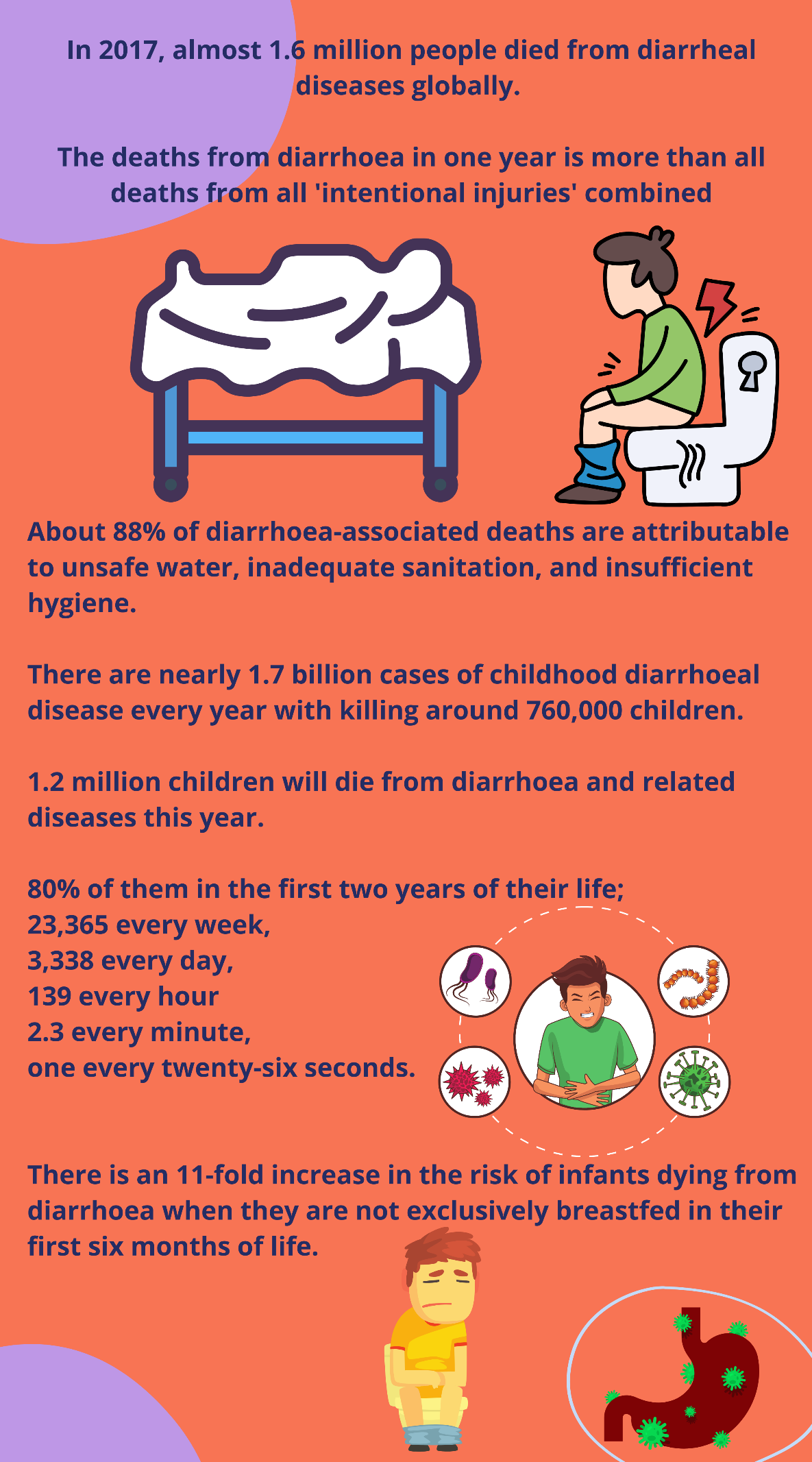
Physical examination for Diarrhea
Important aspects of the physical exam include the patient’s vital signs, volume status, and abdominal exam.
Dry mucous membranes, poor skin turgor, and delayed capillary refill are signs of dehydration. A thorough history and physical exam are important to determine the proper diagnostic workup.
Typically, a patient with acute diarrhoea will have a self-limited course and will not require labs or imaging.
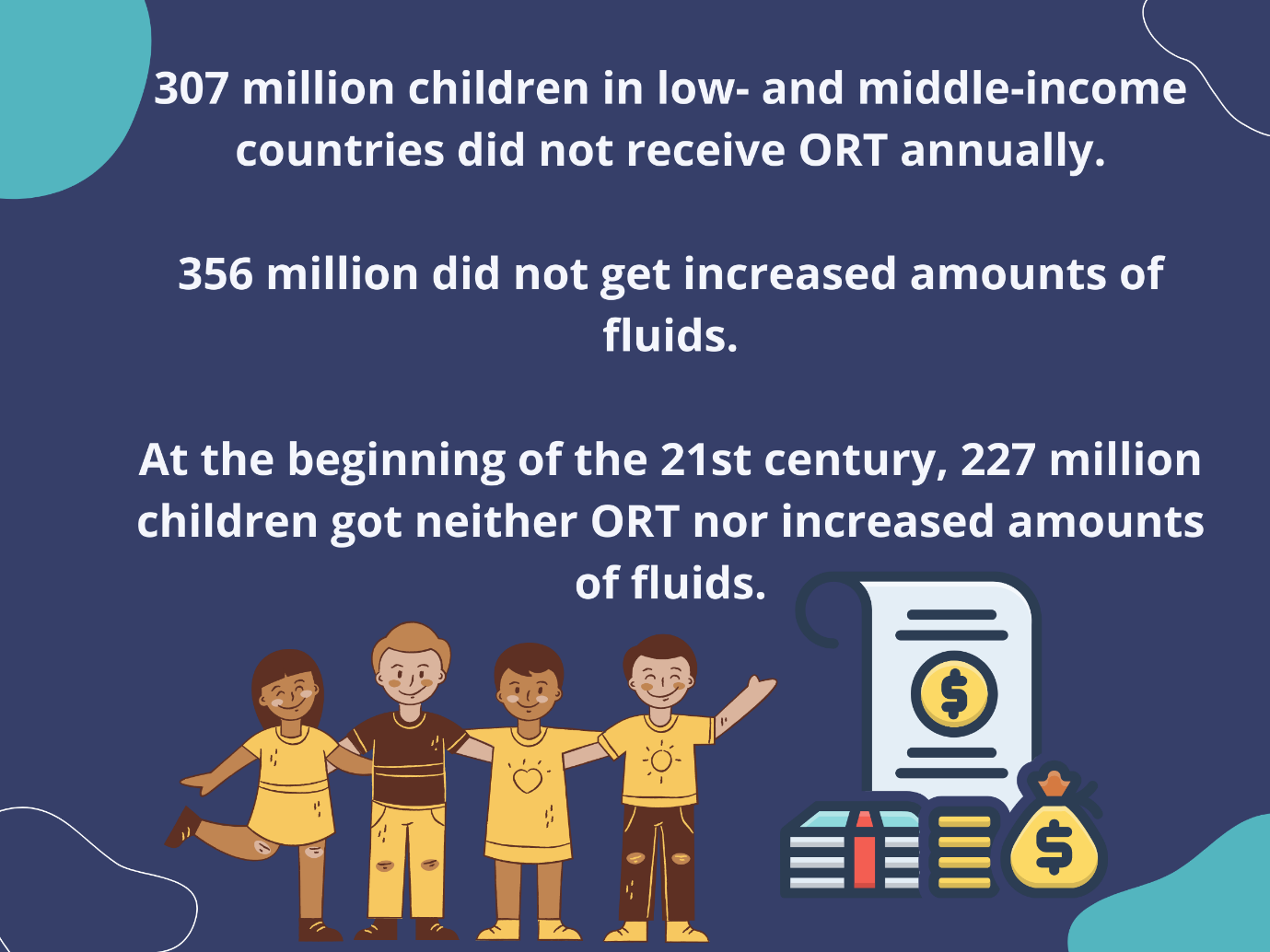
A thorough history is important to determine what labs and imaging need to be ordered to distinguish the cause of chronic diarrhoea.
Basic lab work for a patient with chronic diarrhoea includes a complete blood count, basic metabolic panel, stimulating thyroid hormone, erythrocyte sedimentation rate, liver panel, and a stool analysis.
The physician should categorize the type of chronic diarrhoea as either watery, fatty, or inflammatory based on the patient’s history and physical exam.
Once a probable diagnosis is determined, additional labs and testing specific to the suspected etiology should be ordered.
Treatment
Treatment and management of diarrhoea varies according to the duration and specific etiology.
Rehydration therapy is an important aspect of the management of any patient with diarrhoea.
Another important aspect of diarrhoea management is replenishing fluid and electrolyte loss.
Patients should be encouraged to drink diluted fruit juice, Pedialyte or Gatorade.
In more severe cases of diarrhoea, IV fluid rehydration may become necessary. Eating foods that are lower in fibre may aid in making stool firmer. A bland ‘BRAT’ diet including bananas, toast, oatmeal, white rice, applesauce and soup/broth is well tolerated and may improve symptoms.
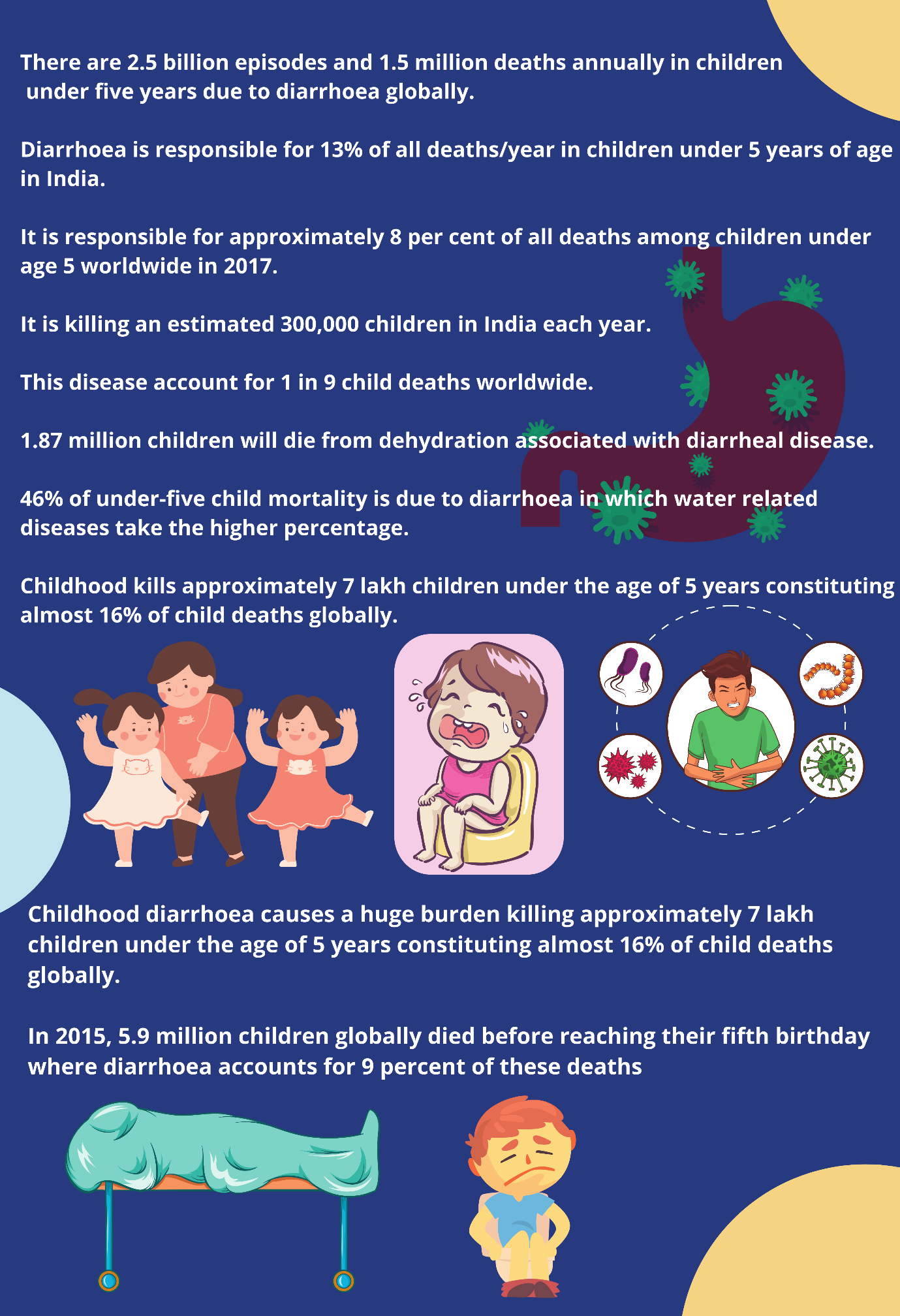
Anti-diarrheal therapy with anti-secretory or anti-motility agents may be started to reduce the frequency of stools. However, they should be avoided in adults with bloody diarrhoea or high fever because they can worsen severe intestinal infections.
Empiric antibiotic therapy with an oral fluoroquinolone can be considered in patients with more severe symptoms. Probiotic supplementation has been shown to reduce the severity and duration of symptoms and should be encouraged in patients with acute diarrhoea.
The treatment of chronic diarrhoea is specific to the etiology.
The first step is to categorize diarrhoea into watery, fatty or inflammatory. Once categorized, an algorithm can be used to determine the next step in management. Most cases require additional fecal studies, lab work or imaging. More invasive procedures like colonoscopy or upper endoscopy may be required.
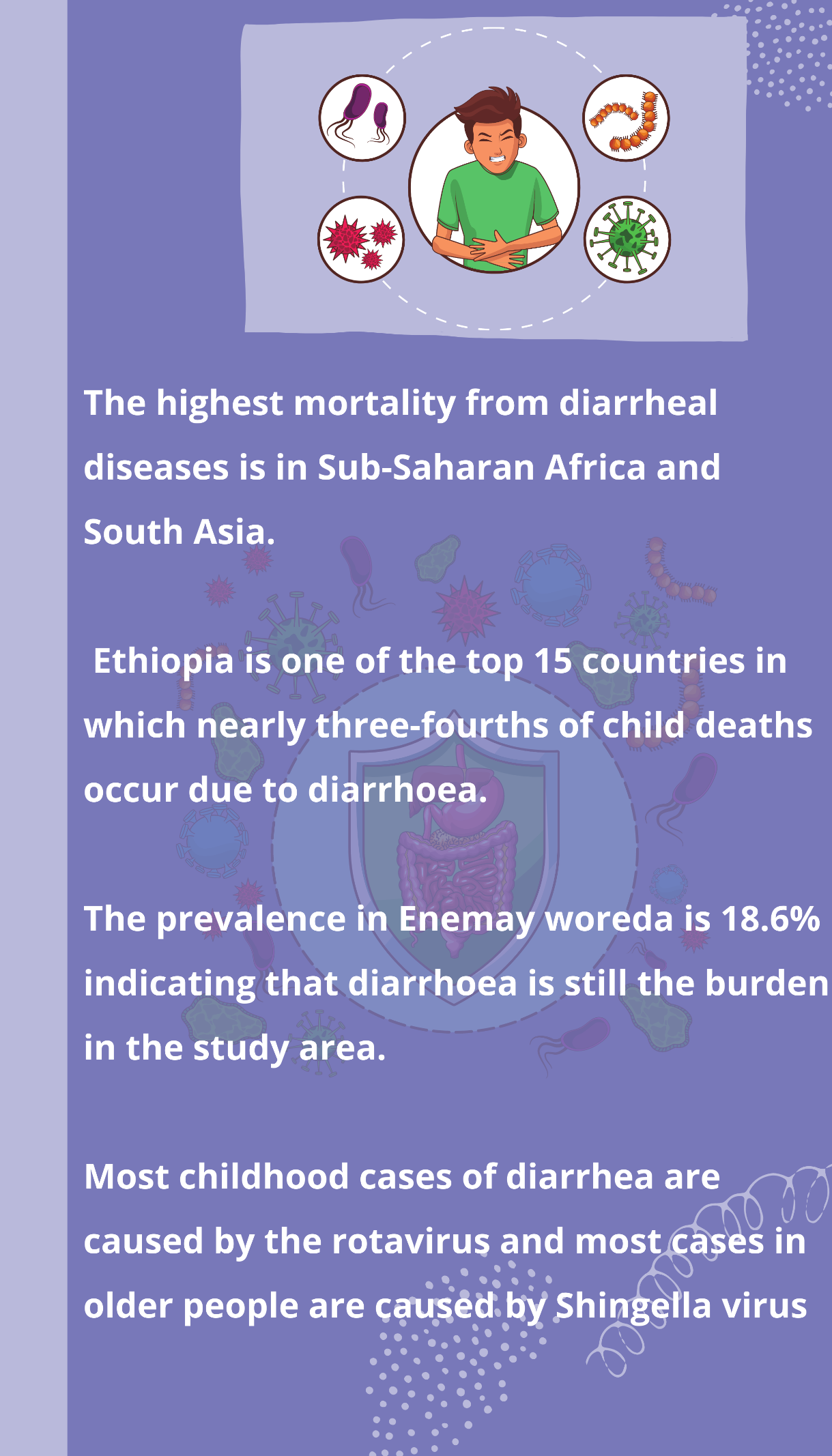
Further information on Diarrhoea
Diarrhoea is the leading cause of morbidity mortality among infants and children younger than 5 years of age in both underdeveloped and developing countries.
But among other ages the rate is still low, this low incidence of diarrhoea could be attributed to safe drinking water availability and common practice of handwashing by most of the people.
Factors determining the occurrence of diarrhoea in children are complex, and the relative contribution of each factor varies as a function of interaction between socioeconomic, environmental, and behavioural variables.
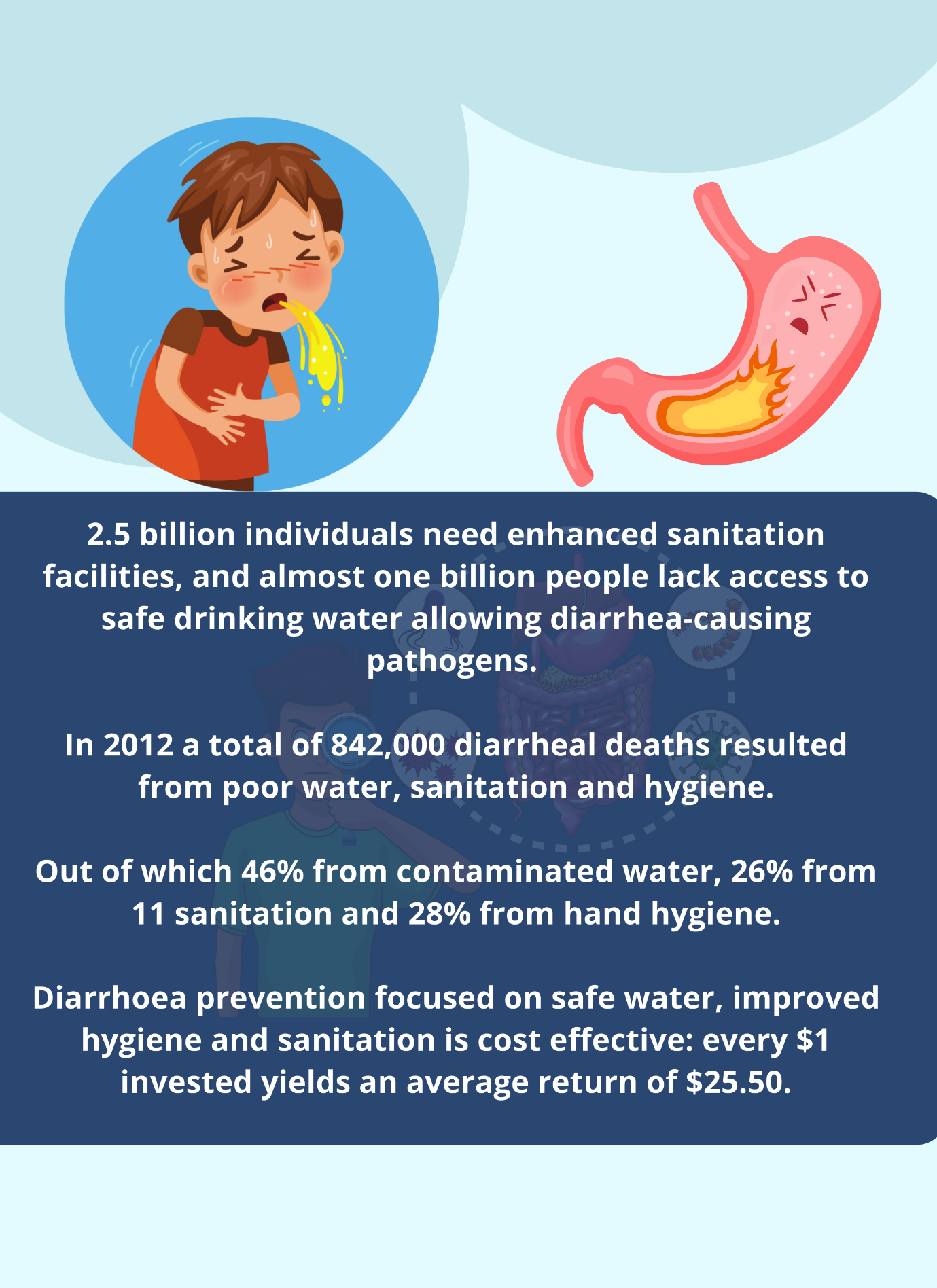
In sub-Saharan Africa, primary caregivers display poor perception about the signs of dehydration, dysentery, and management of diarrhoea.
The incidence of illnesses contributing to avoidable deaths diarrhoea is higher in Ethiopia compared to other sub-Saharan African countries partly due to different factors. In Ethiopia, diarrheal disease is a major public health problem.
In Ethiopia, morbidity reports and community-based studies indicate that diarrheal diseases are a major public health problem that causes excess morbidity and mortality among children.
Prevention
Various preventive techniques were reported in the literatures including hygiene and sanitation, diet, medications, and supplements which are generally classified as health care, breastfeeding, immunization, supplemental zinc, and probiotics.
Treatment and prevention of diarrhoea can be done at home by primary caregivers, and their role is vital in health promotion, disease prevention, and patient care.
Prevention practice of caregivers is important and can prevent diarrhoea-related child morbidity and mortality. One of the most common prevention for infectious diarrhoea includes proper handwashing to prevent the spread of infection.

India has made steady progress in reducing deaths in children younger than 5 years.
This remarkable reduction was possible due to the inception and success of many universal programs like expanded program on immunization, program for the control of diarrheal diseases and acute respiratory infection.
Other types of Diarrhoea
Watery Diarrhoea.
Patients typically have symptoms of bloating and flatulence along with watery diarrhoea.
Lactose is broken down in the intestine by the enzyme lactase. The by-products are readily absorbed by the epithelial cells. When lactase is decreased or absent, lactose cannot be absorbed, and it remains in the gut lumen. Lactose is osmotically-active, and it retains and attracts water leading to watery diarrhoea.
Fatty Dairrhoea
Common causes of fatty diarrhoea include celiac disease and chronic pancreatitis.
The pancreas releases enzymes that are necessary for the breakdown of food. Enzymes are released from the pancreas and aid in the digestion of fats, carbohydrates, and proteins. Once broken down, the products are available for uptake in the gut.
Patients with chronic pancreatitis have insufficient enzyme release leading to malabsorption. Symptoms often include upper abdominal pain, flatulence, and foul-smelling, bulky pale stools due to malabsorption of fats.
Bacterial and viral diarrhoea
In bacterial and viral diarrhoea, the watery stool is the result of injury to the gut epithelium.
Epithelial cells line the intestinal tract and facilitate the absorption of water, electrolytes and other solutes.
Infectious etiologies cause damage to the epithelial cells which leads to increased intestinal permeability. The damaged epithelial cells are unable to absorb water from the intestinal lumen leading to lose stool.
Factors related to Diarrhoea
Young age, low socioeconomic status, poor maternal literacy, presence of under-five sibling in the family, birth weight, inadequate breastfeeding, malnutrition, poor sanitation and hygiene practices of the mother are associated with a higher incidence of diarrheal diseases in young children.
Children belonging to poor socioeconomic status had a higher diarrheal incidence than the better socioeconomic group. Educational status of the mother showed a positive correlation with the incidence of diarrheal diseases.
Poor sanitation and unhygienic conditions are important risk factors for diarrhea. Mode of water transportation, and poor handling of water at the household level, presence of wastewater in the street, refuse storage, collection and disposal, domestic water reservoir conditions, faeces disposal and presence of vectors predispose the under-five children to diarrhea.
Indiscriminate stool disposal by the mothers, lack of hand-washing before feeding their children and hand-washing without soap were associated with increased risk. Though the nutritional status of children is a well-known determinant of diarrhea, frequency of diarrhea was not significantly greater in those who were underweight or stunted compared with well-nourished children in a few studies.
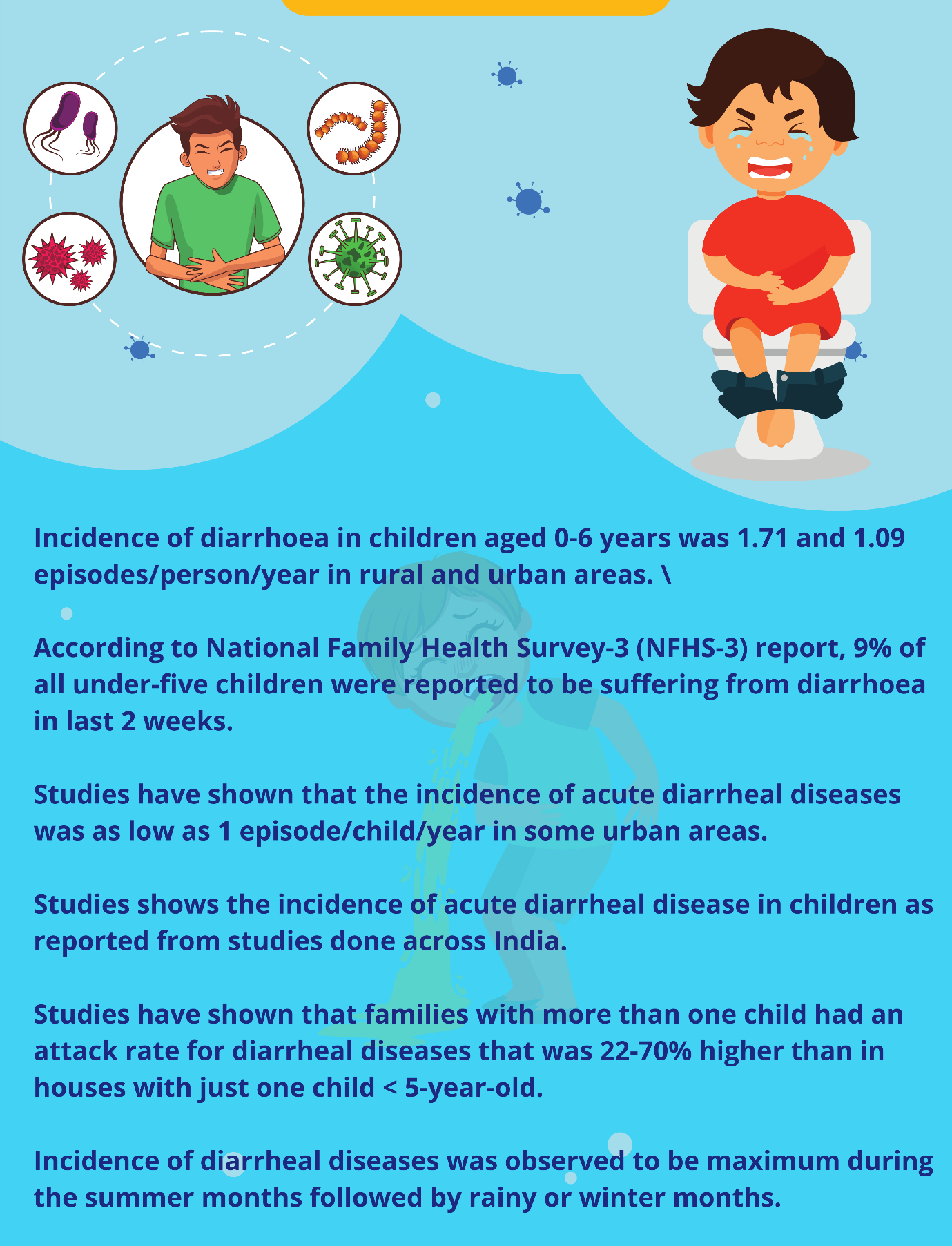
What are the complications of diarrhea?
Dehydration
Diarrhoea may cause dehydration, which means your body lacks enough fluid and electrolytes to work properly. Your body loses more fluid and electrolytes in loose stools than solid stools.
Malabsorption
Diarrhoea may cause malabsorption. If people do not absorb enough nutrients from the food they eat, they may become malnourished. Certain conditions that cause chronic diarrhoea—such as infections, food allergies and intolerances, and certain digestive tract problems—may also cause malabsorption. See a list of the symptoms of malabsorption.

Hey there! Someone in my Myspace group shared this website with us so I came to look it over. I’m definitely enjoying the information. I’m bookmarking and will be tweeting this to my followers! Terrific blog and fantastic design and style.